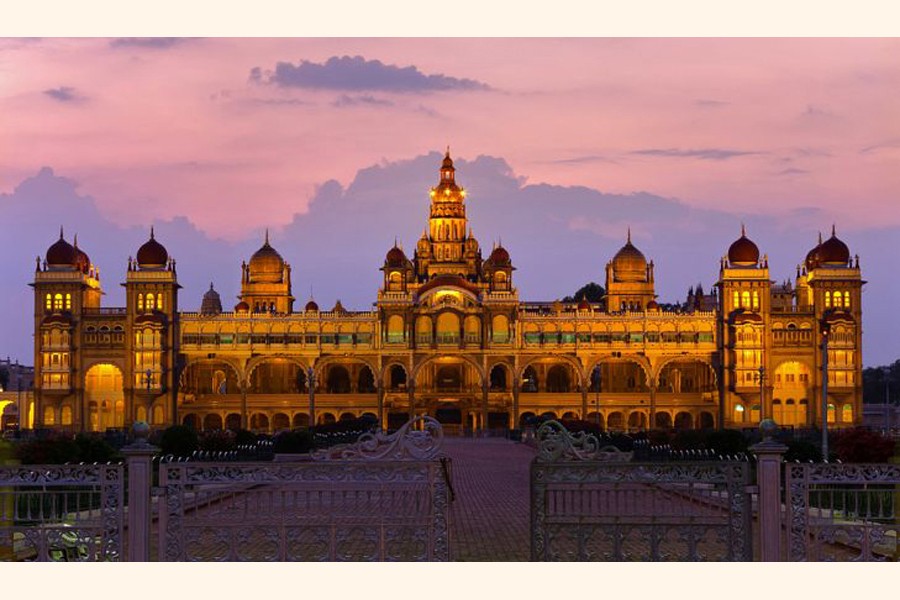Our South Indian family tour was mostly a hectic touch-down at as many tourist sites as possible in as little time as could be spared. Such visits are nothing more than superficial, not allowing one the leisure to develop an insight into the socio-cultural history of people now living and of their ancestors of the bygone era. Yet like the love at first sight, the immediate impression of a place can be everlasting by dint of the enchanting beauty or other attributes not everyone is gifted to perceive in a short time. Also, on a visit to places abroad extensive plans most of the time prove superfluous. Better go with the wind and prize your own likes and dislikes.
Yet a rough sketch of the routes is likely to serve a traveller better. Addition and omission can be made according to weather, timing and above all physical condition and mood. There is no point grumbling foods but after a period, the gastronomical compulsion can prove as overriding as visiting a new site or a temple.
If Bangalore now called Benguluru is more famous for its verdant ambience and quiet living, it is not a tourist place in the sense Mysore is. Mysore made famous by Tipu Sultan and his father Haider Ali boasts its proud history as also its silk industry. Its wide and clean avenues together with its many guest houses or hotels catering to the tastes of sub-continental and Western tourists are an evidence enough of the fact that it is a good host.
One night's stay at a three-star hotel on the main avenue gave an account of highly professional and efficient service. A visit to the Mysore Palace, official residence of the Wadiyar dynasty and a perfect example of Indo-Saracenic architecture, prompted us unaware to compare with the martyred Sultan's summer retreat at Bangalore or the place where he lies eternally. The opulence and resplendent gilded golden decoration of the palace are simply awe-striking whereas, Tipu's palace is hardly sprawling and much less decorative on the inside wall or ceiling.
A visit to the state-owned silk factory proves richly rewarding because it gives an opportunity to behold the process of dyeing of silk fibre and weaving of intricate patterns on electric looms. We counted us lucky because the driver of the car we hired for three days was not only expert in driving but also an informed young man well versed with modern IT gadgets. Never did he ask for roads leading to a site of tourist interest but used the Google map on his car for guidance. From time to time he announced how many kilometres we still had to go before reaching a particular destination. It was courtesy of him that we could visit the silk factory. Other drivers, we were told, do not even know the factory's existence in the city.
A bigger surprise was waiting for us in the afternoon when we were driven to an ashram of a Swamiji. The entire campus has three segments, one of which is reserved as residence for the Swamiji, his followers and staff. But the other two are a unique exhibition of one's passion for cockatoo and bonsai. Nowhere in the world has such a large variety of this particular species of bird. In shapes, sizes and colours they excel and make an extraordinary impression. There are as large cockatoos as the largest eagle and also the tiniest one as small as a parakeet. It is a world of its own and no wonder collection of birds has received the most coveted Guinness recognition for its uniqueness.
The other segment is entirely devoted to bonsai. Its innumerable collection of bonsai trees is simply mind-boggling. They have been arranged in artistic patterns with poetic names for each species. It is indeed a hall of fame for bonsais. Strict silence is maintained here. It is peaceful and far removed from humdrum of city life. This too has been distinguished with Guinness book of world record endorsement.
The uniqueness of the place is captivating no doubt, but for once I felt sad for the captive birds and the trees that have been forced to remain dwarf. To me, this is a drawback of the place and I felt considerably perturbed by the beautiful birds' continuous futile struggle to bite the side and front netting open in order to earn their freedom. In the same way, the dwarfed trees had to be shackled once they made an attempt to spread their branches and roots. Does it have an echo in the unsuccessful campaign of Tipu Sultan to maintain his independence from the British annexation of his kingdom?
(This is the first instalment of a series of travel stories)


